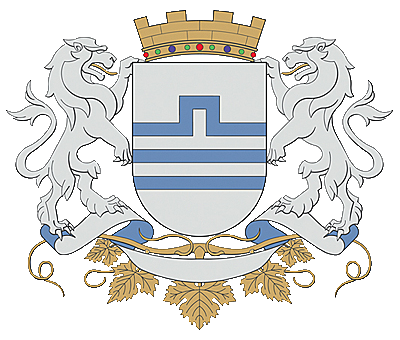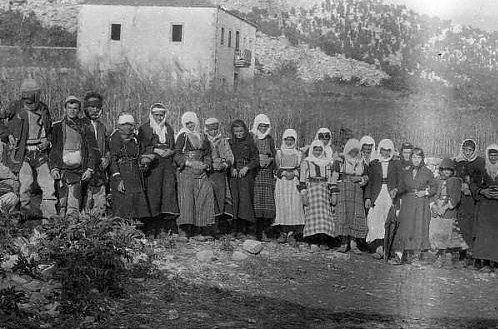|
Mataguzi (tribe)
Mataguzi (alternatively, ''Matagushi'' or ''Mataguzhi'', sr-Cyrl, Матагужи, sr-Lat, Mataguži) was an Albanian tribe in the Middle Ages in southern Montenegro, on the northern shores of Lake Skadar. Their area of settlement included the modern village of Mataguži which takes its name from the tribe. History They appear in historical record for the first time in 1330 in the Dečani chrysobulls as part of the Albanian (''arbanas'') ''katun'' (pastoral community) of Llesh Tuzi, in an area stretching southwards from modern Tuzi Municipality along the Lake Skadar to a village near modern Koplik. This katund included many communities that later formed their own separate communities: Matagushi and his brothers, Reçi and his sons, Bushati and his sons, Pjetër Suma (ancestor of Gruda) and Pjetër Kuçi, first known ancestor of Kuči. About a century later, the Mataguzi were nominally vassals of Balša III. Their lands bordered those of Hoti with whom they were in disp ... [...More Info...] [...Related Items...] OR: [Wikipedia] [Google] [Baidu] |
Albanian Tribes
The Albanian tribes ( sq, fiset shqiptare) form a historical mode of social organization (''farefisní'') in Albania and the southwestern Balkans characterized by a common culture, often common patrilineal kinship ties tracing back to one progenitor and shared social ties. The ''fis'' ( sq-definite, fisi; commonly translated as "tribe", also as "clan" or "kin" community) stands at the center of Albanian organization based on kinship relations, a concept which can be found among southern Albanians also with the term ''farë'' ( sq-definite, fara). Inherited from ancient Illyrian social structures, Albanian tribal society emerged in the early Middle Ages as the dominant form of social organization among Albanians. The development of feudalism came to both antagonize it, but also slowly integrate aspects of it in Albanian feudal society as most noble families themselves came from these tribes and depended on their support. This process stopped after the Ottoman conquest of Albania ... [...More Info...] [...Related Items...] OR: [Wikipedia] [Google] [Baidu] |
Lake Skadar
Lake Skadar ( sh-Cyrl-Latn, Скадарско језеро, Skadarsko jezero, ; sq, Liqeni i Shkodrës, ) also called Lake Scutari, Lake Shkodër and Lake Shkodra lies on the border of Albania and Montenegro, and is the largest lake in Southern Europe. It is named after the city of Shkodër in northern Albania ( sq, Shkodër or ''Shkodra)''. It is a karst lake. The Montenegrin section of the lake and surrounding land has been designated as a national park, while the Albanian section is a nature reserve and a ramsar site. Geography Lake Skadar is the largest lake in the Balkan Peninsula with a surface area that seasonally fluctuates between and . Lake Skadar itself is located on the western Balkan The lake is located in the border area between Albania and Montenegro, the Montenegrin share of the area of the lake is slightly larger than the Albanian. The lake's water level also varies seasonally from above sea level. The lake extends northwest to southeast, and it is ap ... [...More Info...] [...Related Items...] OR: [Wikipedia] [Google] [Baidu] |
Mataguži
Mataguži ( cnr, Матагужи, ) is a village in the Podgorica municipality of Montenegro. It is located in the Upper Zeta region, just north of Lake Skadar Lake Skadar ( sh-Cyrl-Latn, Скадарско језеро, Skadarsko jezero, ; sq, Liqeni i Shkodrës, ) also called Lake Scutari, Lake Shkodër and Lake Shkodra lies on the border of Albania and Montenegro, and is the largest lake in Southern .... It is named after the medieval Mataguzi tribe that lived in the region and founded the original settlement. Demographics According to the 2003 census, the village had a population of 1,299 people. According to the 2011 census, its population was 1,292. References Populated places in Podgorica Municipality {{Montenegro-geo-stub ... [...More Info...] [...Related Items...] OR: [Wikipedia] [Google] [Baidu] |
Tuzi Municipality
Tuzi Municipality ( Montenegrin: Opština Tuzi / Општина Тузи; Albanian: Komuna e Tuzit) is one of the 24 Municipalities of Montenegro. The municipal seat is the town of Tuzi. The municipality is located about 10 km south of the capital Podgorica and consists of more than 40 distinct settlements. The municipality roughly encompasses the Montenegrin part of Malesija (Albanian: Malësia) region. Geography and location Tuzi is situated to the northwest of Lake Shkodra, 10 km from Podgorica and 130 km to Tirana (Albania). It is located in surrounded by forests and mountains that are further connected with Accursed Mountains. Later developments also include a football stadium, Korita, Lake of Rikavac, Vitoja, wellspring in Traboin, Cem (river) etc. It is located along a main road between the City of Podgorica and the Albanian border crossing, just a few kilometers north of Lake Shkodra. The Church of St. Anthony and Qazimbeg's Mosque are located in the centre o ... [...More Info...] [...Related Items...] OR: [Wikipedia] [Google] [Baidu] |
Koplik
Koplik (also known as Koplik i Poshtëm) is a town and former municipality in the northwestern tip of Albania. At the 2015 local government reform, it became a subdivision, and the seat of the municipality Malësi e Madhe. It was the seat of the former Malësi e Madhe District. The population at the 2011 census was 3,734.2011 census results It is situated north of the city of . As of June 2016, Koplik has been registered and administrated as an international 'free economic trade zone' by the Albanian government. Name The name is of Slavic origin, its name occurs as Cupelnich around 1200 in the work of Presbyter Diocleas; Kupêlnik in 1348; Copenico in 1416; Chopilich in 1614 in th ...[...More Info...] [...Related Items...] OR: [Wikipedia] [Google] [Baidu] |
Reç
Reç (also known as Reç i Poshtëm) is a settlement in the former Shkrel municipality, Shkodër County, northern Albania. At the 2015 local government reform it became part of the municipality Malësi e Madhe. Notable people *Bekim Balaj, footballer *Elseid Hysaj Elseid Gëzim Hysaj (; born 2 February 1994) is an Albanian professional footballer who plays as a right-back for Serie A club Lazio and the Albania national team, for which he is captain. Hysaj can operate on both sides of the pitch as a full- ..., footballer References Shkrel Populated places in Malësi e Madhe Villages in Shkodër County {{Shkodër-geo-stub ... [...More Info...] [...Related Items...] OR: [Wikipedia] [Google] [Baidu] |
Bushati Family
The Bushati family ( sq, Bushatllinjtë) was a prominent Ottoman Albanian family that ruled the Pashalik of Scutari from 1757 to 1831. Origins They are descendants of the medieval Bushati tribe, a pastoralist tribe (''fis'') in northern Albania and Montenegro. The name Bushat is compound of ''mbë fshat'' (''above the village''). This is a reference to them being pastoralists that weren't permanently settled. The Bushati started to settle permanently in the 15th century and this process had been completed in the late 16th century. Their settlement includes the village of Bushat in Shkodër in the Zadrima plain from where the Bushati family came. Another part settled with the tribe of Bukumiri in the would-be territory of the Piperi tribe, where they gradually became part of the new, larger tribe in the late 16th century. In the defter of 1497 they appear as ''katun Bushat'' in Piperi with 35 households. The Bushati family traces their origin to the Begaj brotherhood of Busha ... [...More Info...] [...Related Items...] OR: [Wikipedia] [Google] [Baidu] |
Gruda (tribe)
Gruda is a Northern Albanian tribe and historical tribal region in southeastern Montenegro, just north of Lake Skadar, which includes the small town of Tuzi, in Podgorica. It is inhabited by a majority of ethnic Albanians. Geography Gruda is an Albanian historical tribal region within Montenegro, along the mountainous border with Albania, east of Podgorica. It borders to the historical tribal regions of Hoti and Kelmendi to the south and east (in Southern Montenegro and Northern Albania), and Slavic regions to the north. The historical Gruda tribal region, as described by A. Jovićević (1923), include the following settlements: *Settlements on the right bank of Cemi : ** Dinoša / Dinoshë ** Lovka / Llofkë ** Pikalj / Pikalë ** Prifti / Prift ** Selišta / Selishtë *** Gornja Selišta / Selishtë e Epërme *** Donja Selišta / Selishtë e Poshtme *Settlements on the left bank of Cijevna: ** Gurec / Gurrec ** Kaljaj / Kalaj ** Krševo / Kshevë ** Milješ / Mi ... [...More Info...] [...Related Items...] OR: [Wikipedia] [Google] [Baidu] |
Balša III
Balša III ( sr-cyr, Балша III) or Balsha III ( sq, Balsha III) (1387 – 28 April 1421, in Belgrade) was the fifth and last ruler of Zeta from the Balšić noble family, from April 1403 to April 1421. He was the son of Đurađ II and Jelena Lazarević. Reign In April 1403, the seventeen-year-old Balša became the ruler of Zeta when his father Đurađ II died as a result of the injuries he had suffered at the Battle of Tripolje. As he was young and inexperienced, his main advisor was his mother, Jelena, a sister of the ruler of Serbia at the time, Stefan Lazarević. Under the influence of his mother, Balša reverted the order of the state religion, passing a law declaring Orthodox Christianity as the official confession of the state, while Catholicism became a tolerant confession. Balša waged a 10-year war against Venice, the First Scutari War. In 1405, Ulcinj, Bar and Budva were seized by the Venetians. Balša then became a vassal to the Ottoman Turks. In 1409, however, V ... [...More Info...] [...Related Items...] OR: [Wikipedia] [Google] [Baidu] |
Hoti (tribe)
Hoti is a historical Albanian tribe (''fis'') and sub-region of Malësia, a divided area located in northern Albania and southern Montenegro. Its geography is mostly mountainous, but some of its villages are on flat terrain near the banks of Lake of Shkodër. Hoti was mentioned for the first time in 1330 and fully formed as a community in the mid-to-late 15th century. In its long history, Hoti played an important role in regional politics as a leading community in the northern Albanian tribal structure and as a semi-autonomous area in the borderlands between the Ottoman and Austrian empires and later Montenegro. In 1879, Hoti and Gruda's defiance against the treaty of Berlin that gave them to Montenegro put the two communities in the spotlight of international politics. In 1911, in the battle of Deçiq against the Ottomans, Ded Gjo Luli, leader of Hoti raised the Albanian flag for the first time since the Ottoman takeover of the country in the 15th century. At first, in the Sec ... [...More Info...] [...Related Items...] OR: [Wikipedia] [Google] [Baidu] |
Gjadër
Gjadër is a settlement in the Lezhë County, northwestern Albania. At the 2015 local government reform it became part of the municipality of Lezhë. It is known for the former military air base made famous during the Cold War. History According to ''Report of a Visit to Parts of Turkey, Bar, Albania and Serbia'' (written by Marin Bici, Archbishop of Antivari) Gjadër, at the time, was a village of about eighty houses, the vast majority of which were inhabited by Roman Catholics, while two or three houses were inhabited by Muslims. According to the 1890 register of the Roman Catholic Diocese of Sapë Gjadër at that time had a population of 438 people consisting of 388 Catholics and 50 Muslims. Notable people *Gjon Gazulli, ambassador of Skanderbeg , reign = 28 November 1443 – 17 January 1468 , predecessor = Gjon Kastrioti , successor = Gjon Kastrioti II , spouse = Donika Arianiti , issue = Gjon Kastrioti II , royal house = Kastrioti ... [...More Info...] [...Related Items...] OR: [Wikipedia] [Google] [Baidu] |




